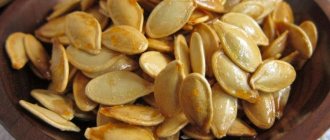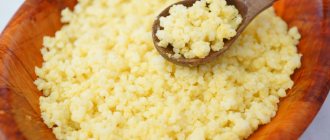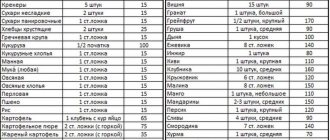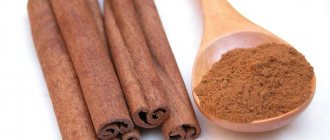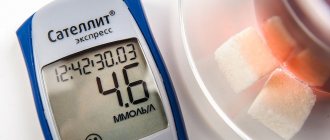Diabetes mellitus is an irreversible pathology of the endocrine system, accompanied by numerous complications. Their progression can be slowed down as much as possible only by adhering to the rules of diabetic nutrition. Diet is a basic part of the treatment of the disease.
All products are differentiated as permitted, prohibited and limited (restricted for consumption). The complex carbohydrate component in a diabetic's menu should be at least 50%. The list of slow carbohydrates includes vegetables, dishes made from legumes, grains and cereals.
However, not all cereals can be used on a diabetic menu. Rice for diabetes is a product whose permission to consume depends on the type of cereal, the quality of its processing and the method of preparation.
Useful qualities and chemical composition
There are more than one and a half dozen varieties of rice. The cereal crop is widely used in the traditional cooking of many nations, from Asia to Europe. The uniqueness of rice cereal is that the less it is processed, the more beneficial properties it retains.
Rice grains contain almost half of the B vitamins, which are specifically prescribed for diabetics to maintain health:
- B1 thiamine – stimulates blood circulation;
- B2 riboflavin – helps normalize metabolism;
- B3 niacin – participates in the regulation of cardiovascular activity;
- B6 pyridoxine – strengthens nerve fibers;
- B9 folic acid – activates tissue regeneration.
Minerals in the composition
| Microelements | Macronutrients |
| zinc, manganese, iron, fluorine, boron, copper, selenium, etc. | silicon, potassium, phosphorus, magnesium, sulfur, magnesium, calcium, manganese |
Rice contains nonessential and essential amino acids (arginine, valine, leucine, aspartic and glutamic acid and others). The cereal also contains monounsaturated fatty acids palmitoleic and oleic (omega-9), polyunsaturated fatty acids: linoleic, linolenic, Omega-3 and 6.
Important! Unlike many other cereals, rice does not contain gluten, so the product does not cause allergic reactions.
Diseases for which rice cereal is recommended by doctors:
- Bronchitis and bronchial asthma. Cereals help cleanse the bronchopulmonary system of phlegm.
- Diseases of the renal apparatus. The cereal has diuretic properties.
- Chronic diseases of the gastrointestinal tract (gastrointestinal tract). Rice is able to strengthen the intestinal walls and heal erosive lesions of the mucous membrane.
- Intoxication and diarrhea. The product is a natural adsorbent.
Eating rice dishes is useful for neuropsychological disorders.
Red rice
Red rice is called hulled rice because only the thickest outer shell is removed, leaving the grain intact.
Its glycemic index is around 55 units, so it can be included in the diet of a person with diabetes.
The calorie content of the product is 308 kcal per 100 g. The chemical composition contains vitamins B, P, PP. Among the minerals, there is a high content of potassium, calcium, magnesium, zinc, selenium, iron, phosphorus, and sodium. Red rice is also a source of omega-3 fatty acids, easily digestible protein, and a large amount of fiber.
Brief description of the main varieties of rice cereals
The most well-known varieties of rice that are easy to obtain are:
Beans for type 2 diabetes
- white;
- brown (brown);
- red;
- black;
- wild;
- steamed.
White varieties of cereals are the most common, but far from the most healthy. During the grinding process, rice is cleared of the grain shell, which contains the main useful components. White grains are rich in starch. This polysaccharide has a high caloric content and does not cause a feeling of long-term satiety. The glycemic index of white rice is higher than other varieties.
When processed, brown cereal is freed only from severe impurities and coarse husks. The bran and shell remain on the grains, which significantly increases the nutritional value of the product. Cereals contain a large amount of water-soluble fiber, protein, selenium, magnesium, potassium, and B-group vitamins. The brown variety is considered beneficial for people with chronic diseases of the cardiovascular system.
Black Tibetan rice. The difference between this variety is the increased content of vitamin E (tocopherol) in the composition. The vitamin helps strengthen the immune system, increase the permeability of vascular walls, and supports visual health. Before cooking, the cereal should be soaked and cooked for three quarters of an hour.
Before introducing exotic black rice into your diet, you should consult your treating endocrinologist.
Wild aka water rice. Compared to the white and brown varieties, it contains five times more folic acid and twice as much manganese. Leads in the amount of protein and amino acids (18 varieties). Water rice contains pantothenic acid (B5), which has a beneficial effect on the functioning of the brain, nervous system, and adrenal glands. The wild variety of cereal is quite specific. It is recommended to eat it in small portions and introduce it into the diet gradually.
Steamed rice is a cereal processed in a special steam method, which allows you to retain most of the vitamins and minerals in the product. In terms of nutritional value, the steamed variety is inferior to the brown and brown varieties, but ahead of white grains.
The red variety is not polished, therefore it contains a lot of dietary fiber, which helps cleanse the body of accumulated slag and toxic waste. The cereal is rich in phosphorus, copper, iodine. Antioxidants in the product block the activity of free radicals, slowing down the aging process of the body. The red variety of cereals has an increased content of magnesium and potassium, which regulate cardiac activity.
Separately, Indian basmati can be distinguished. It belongs to the white variety of cereals, but is not subject to industrial processing. Basmati contains maximum vitamins and minerals. Its glycemic index is 10-15 units lower than that of white rice. Basmati has a unique taste, is considered an elite product, but, unfortunately, has a high cost.
Exercise and activity
It is equally important for patients with diabetes to be physically active. Glucose is the main fuel for muscles; due to regular exercise, it is actively consumed, and its level in plasma is maintained lower. In addition, exercise helps maintain overall health and good mood, strengthens the heart and blood vessels, and helps more actively deliver oxygen to tissues.
Physical activity includes traditional exercise such as swimming or playing football. But there is also household activity - you need to move around the house more or use the stairs instead of the elevator. It all matters.
Some people worry that physical activity will be too strenuous or that it will make diabetes management more difficult. And if hypoglycemia occurs frequently, patients worry that their blood sugar will drop sharply. But activity doesn't always lower your blood sugar—it can also cause it to rise.
There is no one activity that is suitable for everyone with diabetes. It's about finding what works best for a particular patient. It is best to combine different activities because they have different benefits. And doing the same thing will get boring after a while.
For example, swimming can increase your breathing and increase your heart rate. This is good for heart health because it has to work harder to pump blood around the body. And if you have diabetes, it's even more important to keep your heart healthy because diabetics are at greater risk for heart disease and other complications. But even gardening helps build strength and can help the body use insulin better.
Rice in the diet of diabetics
According to the rules of diabetic nutrition, foods whose glycemic index (GI) does not exceed 30–40 units are allowed in the diet. With caution, food indexed to 70 units is allowed in limited quantities. Products with a glycemic index of 70+ are excluded from the menu.
In addition, an important point for diabetics is the energy value of foods. The diet for type 2 diabetes is aimed not only at stabilizing blood glucose levels, but also at reducing weight. Products included in the daily menu should not be high in calories.
Caloric content and glycemic activity of different varieties of rice cereals
| Name | Energy value (kcal/100 g.) | GI |
| white | 334 / 340 | 70 |
| brown | 330 | 50 |
| wild | 350 | 50 |
| red | 360 | 55 |
| steamed | 341 | 60 |
| black | 340 | 50 |
When cooking rice, it absorbs a lot of liquid, therefore, the mass of the finished dish becomes larger, and the calorie content is reduced by two and a half times. Based on vitamin-mineral, nutritional characteristics and glycemic activity, the varieties recommended for diabetics are: brown, aquatic (wild), black and red rice varieties.
White rice should be excluded from the diet. Excessive starch content, a minimum of nutrients, and a high glycemic index of white cereals negatively affect the health of patients with diabetes. Packaged instant rice is strictly not allowed in the diabetic menu. This is a thoroughly purified product with high GI and calorie content.
Standardized consumption of rice cereals
Any of the varieties of cereal is not a product that can be consumed without restrictions. The amount of rice dishes in the diet should be strictly limited. How much cereal diabetics can afford depends on several factors:
- Stage of the disease. With stable diabetes compensation, rice soup is allowed twice a week or rice porridge or a grain side dish once a week. In the subcompensated stage, the dosage of the product is reduced by half. If diabetes is decompensated, rice should be avoided.
- Presence of associated complications. If you are prone to constipation and obesity, the number of rice dishes should be reduced.
- Type of endocrine pathology. For type 1 diabetes, rice must be consumed in accordance with the XE (bread units) table.
Important! The serving size must be agreed upon with the endocrinologist. Permission to eat rice depends on the individual nature of diabetes.
Bread units are designed to correctly calculate the insulin dose according to the carbohydrates eaten. One XE equals 12 grams. net carbohydrates. For type 1 diabetes, no more than 25 XE are allowed per day. In this case, it is necessary to take into account all carbohydrate-containing products. It is recommended to consume up to 5 XE for breakfast. This includes the main dish: rice porridge, additives (berries or dried fruits), a drink (for example, coffee with milk).
1 tablespoon of raw cereal is 15 grams. This quantity is identical to one unit of bread. When cooked (porridge in water), the weight of rice increases to 50 grams. (2 heaped tablespoons), which will also correspond to 1 XE. In the system of bread units, the norm will look like this: 3XE = 45 g. cereals = 150 gr. porridge.
The energy value of boiled brown rice is 110 kcal/100g, therefore, a serving of porridge will contain only 165 kcal. It is recommended to combine rice as a side dish with fish or seafood. It is mandatory to eat vegetables along with rice. This will help you digest and assimilate the cereal normally.
Is it possible to reduce the glycemic activity of cereal? To do this, rice should be cooked al dente (the average degree of hardness at which the product is considered ready). Rice should be eaten immediately after cooking. If the dish is reheated repeatedly, the rice will swell, increasing its glycemic index.
Why is rice so important for type 2 diabetes?
In diabetes of this type, glucose is retained in the physiological fluids of the body, including blood, which contributes to an increase in osmotic pressure. And the removal of fluid from other tissues, leading to the development of osmotic diuresis. The kidneys begin to work harder and remove fluid - dehydration develops. Many minerals and useful substances necessary to maintain the homeostasis of salts and vitamins are excreted in the urine. To restore their normal content, patients are recommended to eat foods rich in such elements. The main representative is rice.
Recent studies by American scientists at Harvard University have proven the harmfulness of eating regular white rice for diabetes. It contains the largest amount of glucose among all types of rice. Rice also does not contain the amino acid gluten; its absence is a factor contributing to the development of this type of diabetes.
Examples of diabetic dishes with rice cereals
Rice can be used as a side dish, as a main dish, added to fish and chicken soup, or as a filling for pies. You can prepare desserts from rice (pudding, casserole). Not all known methods of using rice cereal in cooking are suitable for a diabetic menu. If you have diabetes, it is better not to combine rice with dough products, eggs, or pears.
Chinese cabbage rolls with brown rice
Chicken breast fillet is used as a meat ingredient for cabbage rolls. To prepare you need:
- 1 breast (about 300 gr.);
- medium fork of Chinese cabbage;
- 1 raw carrot and 1 onion
- 100 gr. brown cereal (cooked al dente);
- two tablespoons of 10% sour cream;
- salt, spices, fresh herbs.
Pass the chicken fillet and half the onion through a meat grinder. Add finely chopped herbs, salt and spices. Knead the minced meat well. Add cooked brown rice and stir. Cut the stalk from the cabbage and carefully remove the thickenings on the leaves with a knife. Simmer (blanch) cabbage leaves in boiling water for 1–2 minutes.
Remove the cabbage from the boiling water, spread out the leaves and cool. Place a tablespoon of minced meat on the edge of the sheet and wrap it in an envelope. Place the cabbage roll in a saucepan or slow cooker. Add grated carrots and the second half of chopped onion. Dilute sour cream with 200 ml of water, add salt, pour over cabbage rolls and simmer for 40 minutes. Before serving, sprinkle with chopped herbs.
Rice soup
You can use chicken drumsticks for the broth base. For two liters of soup you will need:
- 2 drumsticks (first remove the skin and boil);
- onions and carrots - one piece each;
- green pepper – ½ piece;
- brown or red rice – 30–40 g;
- frozen broccoli – 1 package (400 gr.);
- salt, pepper (peas), bay leaf.
You can replace broccoli with cauliflower or make a soup from two types of vegetables.
Pour the washed cereal into the prepared broth, bring to a boil and cook for 15–20 minutes. Add grated carrots, finely chopped onion and pepper. Boil for five minutes. Add salt, peppercorns, bay leaf. Cut the broccoli into florets and add to the soup. Cook until done.
Salad with black rice
Sort the grains and rinse thoroughly several times. Pour in cold water and let sit for several hours. This will speed up the cooking process. Cook the rice al dente. Products for salad:
- 100 gr. ready-made cereals;
- ½ small head of iceberg lettuce;
- 2 tomatoes;
- one small red onion;
- 1 medium sized carrot;
- 1 small avocado.
Cut the tomato, avocado and onion into cubes, grate the carrots on a coarse grater, and carefully chop the salad. Mix vegetables, add black boiled cereal. Pour in the dressing and let the salad sit for a quarter of an hour. Proportions of products for dressing:
- cold-pressed olive oil – 50 ml;
- soy sauce – 2.5 tbsp. spoons;
- garlic – 2 cloves (squeeze through a press);
- juice of ½ lemon;
- mixture of peppers - to taste.
There is no need to add salt to the recommended salad dressing.
Several rice recipes
It will be useful for diabetics to know several different recipes using rice so that the product does not become boring, delighting in the variety of dishes. For example, you should try to cook steamed rice with a low starch content, for which you need to add it to a pan with water in a ratio of one to three (for two servings of the dish you need to take half a glass of rice and one and a half glasses of water). The next ingredient is half a tablespoon of vegetable oil, also added to the pan. After the water has boiled, you need to continue cooking the rice over low heat for about 20 minutes, stirring it occasionally. It is important to ensure that it does not burn and add water if necessary. You can serve the dish along with vegetables and fresh herbs.
To cook brown rice, you must first rinse it well in running water, ensuring that it is completely transparent at the end of the process. Then the grains must be transferred to a saucepan and held over medium heat, stirring a little, so that it dries out. The next step is to dilute half a cube of vegetable broth in three glasses of hot water, after which the solution is poured into the rice in a saucepan and brought to a boil over high heat. After boiling, wait until the water has completely evaporated without stirring the rice or opening the lid. The whole process will take about 30 minutes.
Results
Diabetes mellitus is a serious disease, 80% of which is controlled by proper nutrition. Products allowed in the diet should not have a high calorie content, fat content or glycemic index. Rice for diabetics is a product that can be consumed in limited quantities subject to certain conditions:
Refuse white varieties of cereals (brown, red, and black varieties of cereals are allowed on the menu). Do not combine with dough products. Strictly monitor the portion size and frequency of consumption of rice dishes. In the diabetes compensation stage, you are allowed to eat rice soup twice a week or a rice side dish (porridge) once. In the decompensated stage of diabetes, eating rice is prohibited.
How exercise affects blood sugar levels
Physical activity can have different effects on blood sugar levels, depending on what the person with diabetes does. Many people don't want to exercise because it lowers their blood sugar. Not all types of exercise lower blood sugar; some cause it to rise. Therefore, it is important to follow a number of rules.
The best time to exercise is one to three hours after a meal, when blood sugar levels may be higher. If a person takes insulin, it is important to check their blood sugar levels before exercise. If your pre-workout level is below 5.5 g/L, eat a piece of fruit or have a small snack to boost your blood sugar and avoid hypoglycemia. Testing again after 30 minutes will show whether your blood sugar levels are stable. It's also a good idea to check your blood sugar levels after any particularly strenuous workout or activity. If the patient is taking insulin, the risk of hypoglycemia may be greatest 6 to 12 hours after exercise. Experts also warn against exercise if a person's blood sugar levels are too high (more than 13.8 g/L) because exercise can sometimes raise blood sugar levels even higher.
Because of the dangers associated with diabetes, a medical alert bracelet should always be worn indicating that the patient has diabetes and is taking insulin. You should also keep glucose lozenges or tablets with you during your workout in case your blood sugar levels drop sharply.

